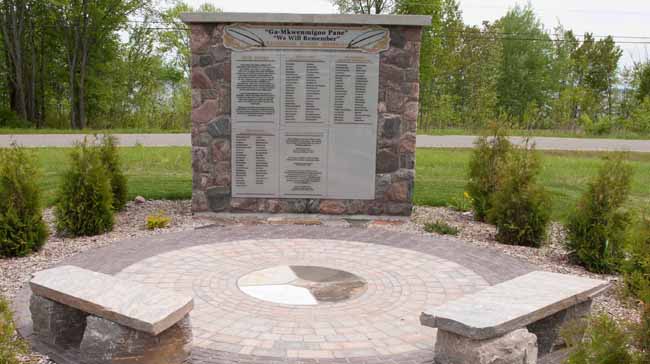PhD candidate calls for Indigenous People to be a part of the Canadian heritage process

OTTAWA – An Ottawa PhD candidate is calling for Indigenous People to be full participants in the Canadian heritage process.
Carlton University’s Trina Cooper-Bolam’s master’s thesis, Healing Heritage: New Approaches to Commemorating Canada’s Indian Residential School System was heavily cited in the Truth and Reconciliation Commission’s final report summary released in June.
Cooper-Bolam explains that $20-million dollars was made available to Survivors and communities to fund 145 projects to remember and forget the atrocities of Indian Residential Schools.
“We have had indigenous peoples participating in commemoration at an unprecedented level. Their heritage practices are decolonizing.”
Cooper-Bolam says projects have drawn on art-as-resistance and social activism-oriented models of commemoration and counter-commemoration.
“The difference in the programs was astounding. I found myself saying these programs have a healing element to them. They were much less about historic conservation than they were about healing. We should be infusing the Indigenous ways into existing programs and commemorative infrastructure.”
“The thing is Canada has programs of historical commemoration, nationally as well as having provincial and municipal programs. But because the Indian Residential School System was a national network of federally funded schools, it affected people across the country, and well beyond the settlement offer with many people being left out of the agreement, we really should be getting support from the existing programs to be able to commemorate on an ongoing basis.”
“So what I’m saying is that the $20 million dollar commemoration fund is not cutting it. By sending out that one time funding, the federal commemoration programs don’t have to change and continue to exclude Survivors and Indigenous Peoples in general.”
Cooper-Bolam cites another scholar who researched how physical sites were being commemorated. Some of the municipal and provincial buildings were found to have plaques but none of the federal buildings have plaques on them. She says when people demolished schools in ceremony, in an indigenous context; it can be a healing and appropriate thing to do. It can cleanse the site. There can be a feast after. The ceremony helps the survivors to take part in the demolition and to take control over the site, reclaiming control over their own lives.”
Cooper-Bolam says the federal commemoration programs would never consider nominating a place for any kind of designation without the guarantee the conservation of the building is free from demolition. “The Historic Sites Act needs to change. Why are non-indigenous people deciding what is historically significant to indigenous people?”


